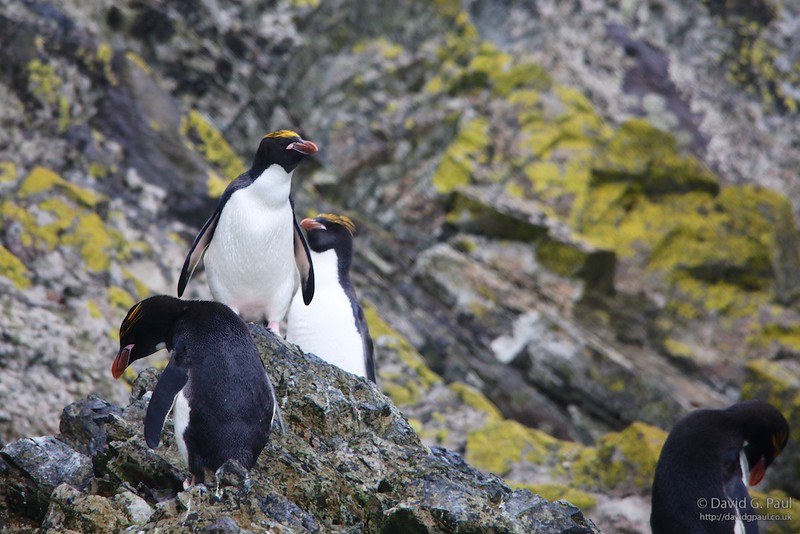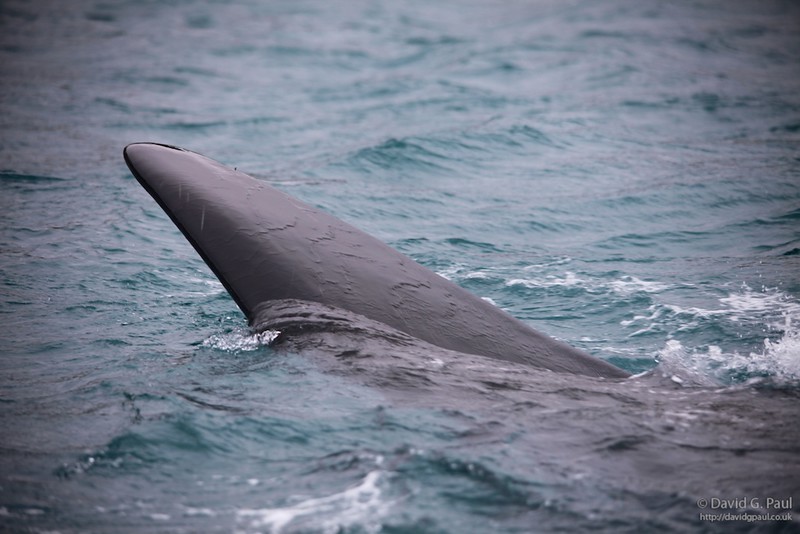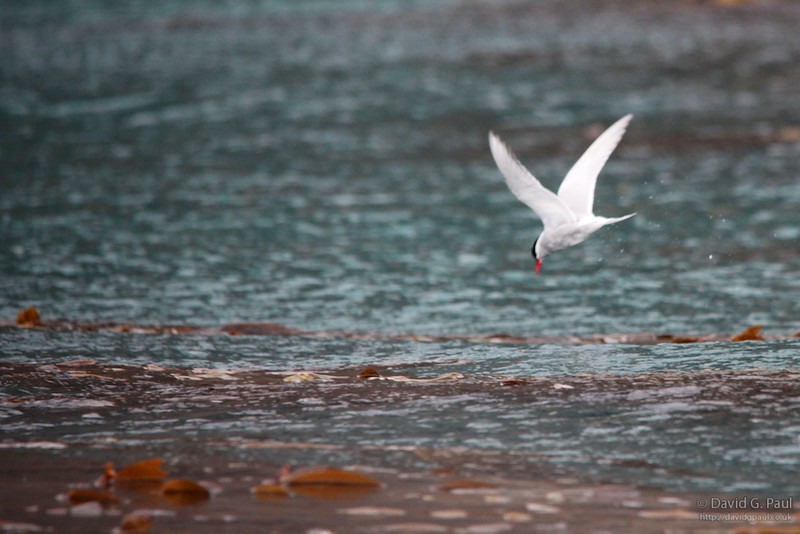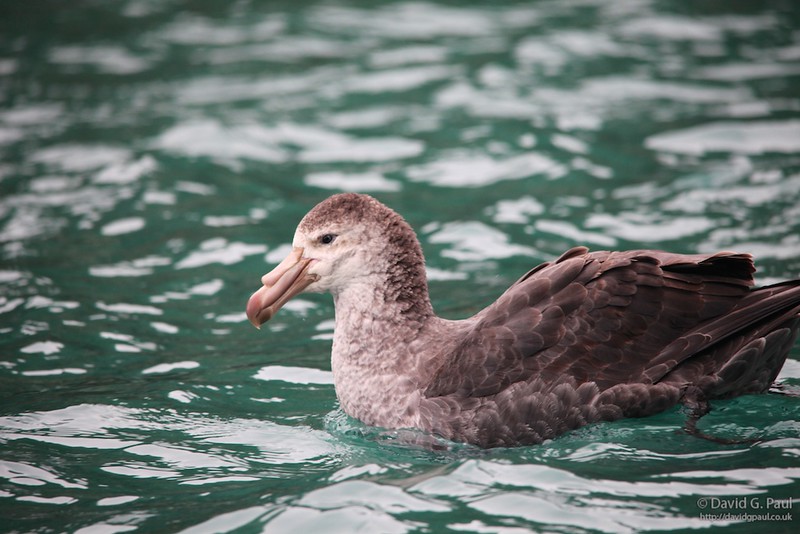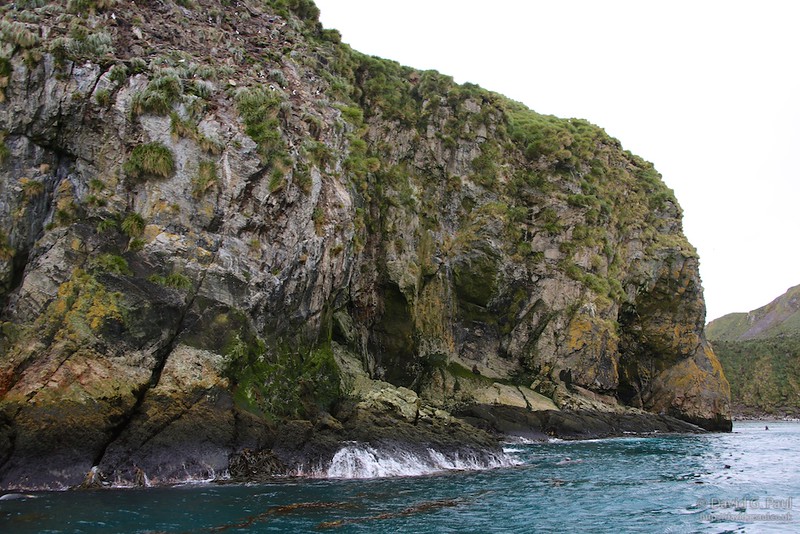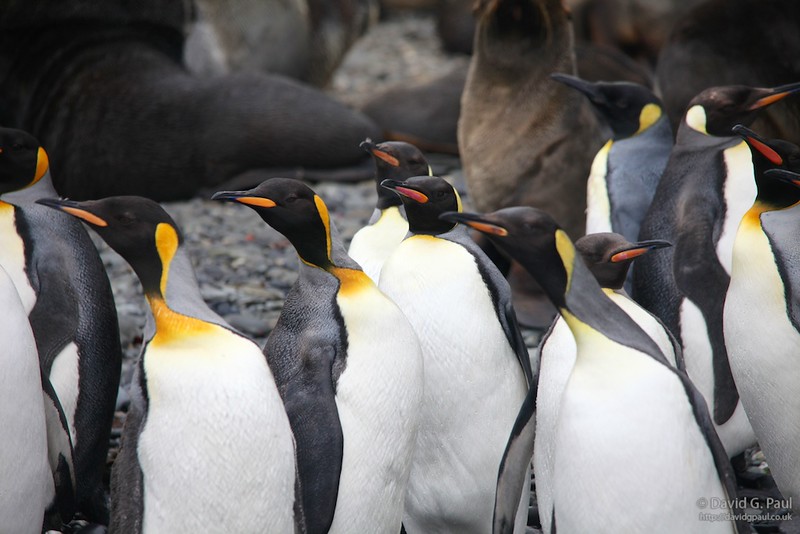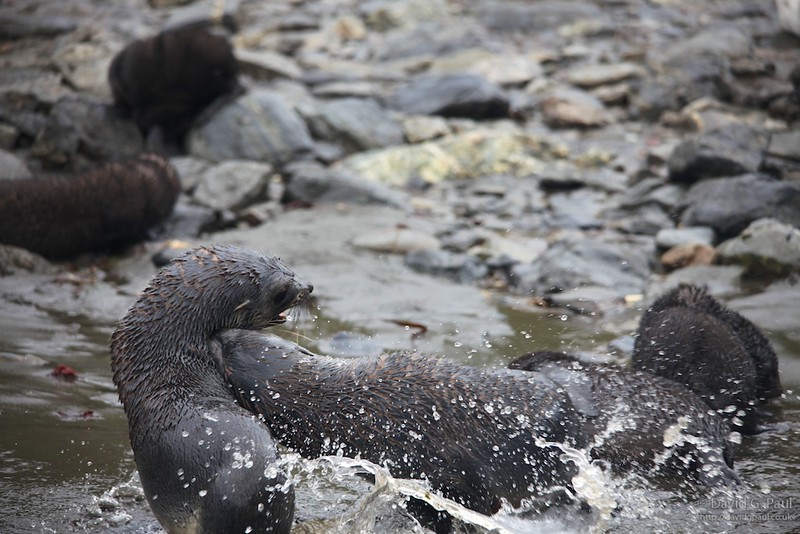As we were awoken for breakfast we were making our final approach to the main South Georgia island, escorted by playful Antarctic Fur Seals. The weather outside looked foggy and wet, so the morning’s zodiac cruise would potentially be quite damp. With every passing minute more and more of the island came into view – through the fog we could see some snow covered mountains.
Whilst having breakfast it started to snow and this gave a good indication of wind speed as the snow was falling almost horizontally. As is apparently normal for South Georgia, the weather changed quickly and the sun was soon trying to break through the cloud.
After breakfast we kitted up in warm layers and headed out in the zodiacs for a cruise around Elsehul (a Norwegian name meaning bay of the vessel Else). To start with, navigated by the Russian sailor Igor, we headed over to an area dominated by Macaroni penguins and seals. It was difficult to get photographs here though as other people on the boat kept leaning in the way or standing up in front of me. Around us there were seals playing in the water and every now and then they’d follow us quickly in the boat’s wake.
Whilst heading over to another part of the bay a Southern Right Whale, partially covered in callosities, fully surfaced less than two metres from our zodiac; amazingly we were the closest boat to it. It was an absolutely amazing sight, but no one could react quick enough to take a photograph – the best I could manage was its tail fin as it submerged. Again it came to the surface, but this time it blew smelly water out of it’s blow hole (which is technically like the whale sneezing) covering us, and stopping us from trying again until we’d dried our cameras off.
The term “right whale” comes from the days of whaling when those that would be the right ones to hunt for were the ones which the majority of would stay on the surface once killed and would swim close enough to be seen.
We then continued around the bay making stops to see different types of seal, and also King penguins. There was also the occasional Gentoo penguin dispersed amongst them. Of what I could see there were two types of seal: Antarctic Fur Seal, and Elephant Seals. In the case of Elephant seals we only saw young and juvenile males and females, and adult females as the adult males had already gone out to sea – some of those we did see were still quite large though.
For the fur seals we watched as both young cubs and very large males fought each other; some chased penguins and others were being playful in the sea. Some of the fur seals we saw were blonde – apparently only about 1% are born this colour. Although I couldn’t find any information on it, I think it’s likely that what appears to be a mutation may be just a recessive gene which both parents must pass on in order for it to be blonde.
On the way back to the ship we heard over the radio that one of the guides had broken down with a possible fuel issue. Just before we boarded the ship we heard another zodiac was losing air, possibly having snagged something near the shore. Though later on we heard that the other zodiac had collided with a seal bouncing out of the water.
Once all zodiacs were back on board and the anchor weighed, we set off again in the direction of our next stop. As we moved we passed mountains on either side, both covered in snow – it’s a strange thing to be able to see from your window.
Unfortunately my camera had misted up once brought back aboard so could not be used to photograph any of the channel. By the time it had demisted, and lunch consumed, the weather had changed again to fog and very fast moving snow. The 50 knot wind was so fast it was actually difficult to go out on deck, and you could see fine spray being blown from the surface of the sea. This meant it wouldn’t be safe to go out in zodiacs and so we moved on from Right Whale Bay which we’d arrived at and headed for Prince Olav harbour – a three hour navigation.
The hope was that when we arrived at our new destination we would at least be able to have a cruise to see more, though our hope was that we’d be able to set foot on South Georgia for the first time on our expedition. To pass the time there was then a lecture on the famous explorer, Ernest Shackleton, whose grave we expected to see in the following days.
Before we got to the harbour we arrived at a sheltered place called Rosita Harbour which seemed like a good place to stop instead. As none of the expedition team had been there before they first did a quick reconnaissance trip before confirming we’d be able to make it ashore. Once they’d scouted the area ahead they gave the green light for us to board a zodiac and head ashore.
The journey from the ship to shore was entirely through a large amount of hail stones that was falling not that far off horizontally. As we got closer to the shore it did eventually ease off to a more manageable level.
On this part of the island it was overrun with Antarctic fur seals, but they shooed them away before we disembarked. There were also a few King Penguins about, but the main thing was that we could wander around on land again – and take photographs from something which was not moving independently to the subjects. At one point a young seal energetically ran towards me and I had to hold out my out and tell it to stop, as we’d been told to. Seals that get too close have a habit of biting people, even if only meant playfully.
Whilst ashore the rain did almost come to a stop, and in places the sky had brightened up creating an almost surreal view of mountains, tussock grass and seals with beams of light shining through.
After an hour we headed back to the ship so we could get ready for dinner – an hour was about the right amount of time as we’d already seen both of these species. The evening meal was venison with brussels and roast potatoes and was followed by vienetta ice cream with berries.
Following the evening meal was a briefing for the next day’s activities. By 22:30 we’d reached our next destination and had dropped the anchor for what would hopefully be a calm evening.


